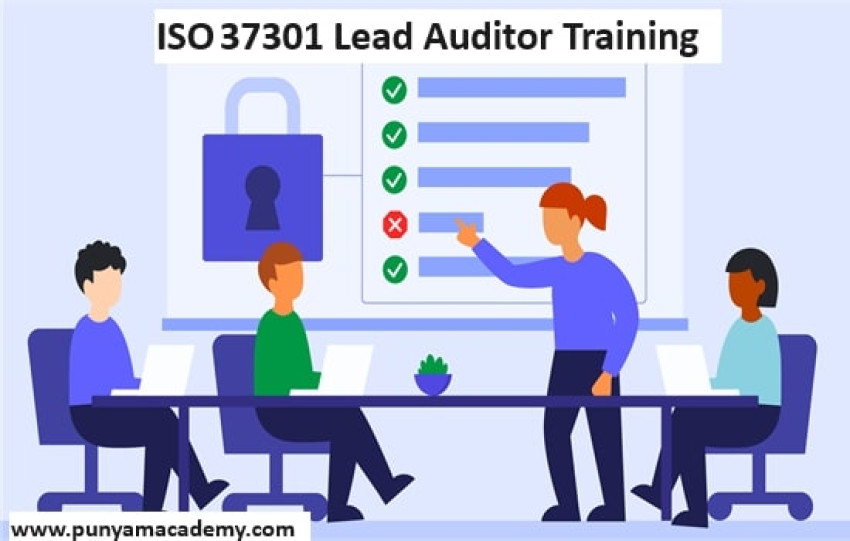
ISO 37301 is a Globally recognized standard that gives guidelines and needs for establishing, implementing, controlling and developing an effective Compliance Management System (CMS) in any business. It helps to prevent, respond and find the risks and adhere to legal, and regulatory commitments. The principles of ISO 37301 are as follows:
- Continual Improvements: The ISO 37301 standard emphasizes the importance of continuous improvements and assessment of CMS.
- Training: Effective ISO 37301 auditor training course and communications are crucial for boosting an organizations compliance culture.
- Risk-based Approach: This standard promotes the identification and prioritization of compliance issues by organizations using a risk-based approach.
- Integration: It encourages the incorporation of compliance management into the entire governance, risk management, and internal control architecture of an organization.
- Top Management Commitment: Top management's active participation and dedication are essential to a CMS's success.
- Monitoring and Evaluation: Consistent monitoring and evaluation of the CMS's functioning are essential to guaranteeing its efficacy.
How an Organizations can Create a Better Compliance Management System?
Businesses in a variety of industries are under increasing pressure to guarantee compliance with several laws, rules, and standards in today's complicated regulatory landscape. It takes a strong compliance management system (CMS) to help organizations reduce risks, preserve integrity, and respect moral principles. These steps outlined how an organization can create a better Compliance Management System.
- Step 1: Determine Who Is Interested: As a starting point, list all pertinent parties, such as staff members, clients, vendors, regulators, and investors. It is essential to comprehend these parties' requirements and expectations to create a thorough and adaptable compliance management system.
- Step 2: Ascertain the Organization's Context: Examine the organization's environment by taking into account its size, sector, locations, and any related legal, ethical, and regulatory constraints. Determine any possible hazards or difficulties with compliance and make sure the CMS takes these into account.
- Step 3: Verify the Support of Upper Management: Obtain the senior management's backing and dedication to cultivate a compliance culture within the company. This entails defining roles and duties for the compliance function, assigning relevant resources, and creating explicit compliance policies. It is imperative that upper management proactively encourages all staff members to uphold ethical standards and comply with the law.
- Step 4: Present the Monitoring Systems: To identify and stop non-compliance, put in place efficient monitoring systems. This could involve conducting frequent compliance checks, risk assessments, and internal audits. Create clear channels of communication for staff members to voice concerns or report possible infractions, and make sure that these reports are immediately and completely investigated.
- Step 5: Track and Look into Non-Compliance Cases: Keep an eye out for, look into, and, where necessary, take appropriate remedial action in response to instances of non-compliance. Determine the underlying causes of non-compliant behaviour and take action to stop it from happening again. Maintain the CMS's continued efficacy in managing compliance risks and satisfying interested parties' needs by periodically evaluating and updating it.
- Step 6: Regular Monitoring and Reporting: Establish procedures for the regular measuring, reporting, and observation of compliance-related activities and performance metrics. This could involve monitoring development and pinpointing areas for improvement through the use of dashboards, metrics, and Key Performance Indicators (KPIs).
- Step 7: Secure Data: To prevent unwanted access, use, or exposure of private information, put strong data privacy and security measures in place. Implementing suitable controls and safeguards can help you ensure compliance with data protection laws and regulations, such as the CCPA and GDPR.
- Step 8: Leadership and Accountabilities: Establishing defined roles, duties, and performance indicators can help you keep leaders and important stakeholders accountable for compliance. Aim to incorporate compliance goals and objectives into incentive programmes and performance reviews.
- Step 9: Communication with Stakeholders and Engagement: Encourage honest and transparent communication about compliance initiatives, successes, and difficulties with all relevant parties, such as staff members, clients, regulators, and investors. To improve decision-making and increase the efficacy of compliance, seek opinions and suggestions.



